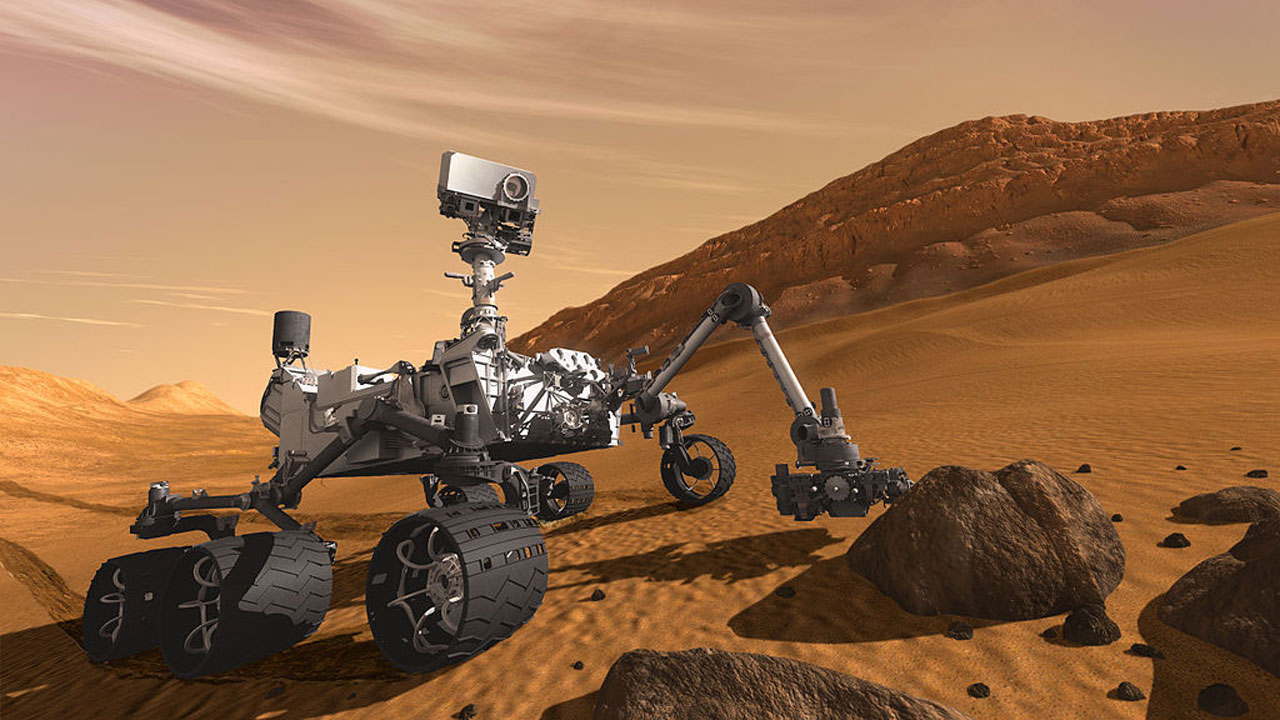The Martian rover Curiosity, which NASA landed on the Red Plant in 2012, has reached a milestone in its scientific journey. After traversing a variety of terrains on the planet’s surface, including one that proved to be an ancient lake bed that could have once contained life, Curiosity is preparing to climb Mars’ Mount Sharp, a mountain about the size of Mount Ranier that sits in the middle of a giant crater.
NASA explained the plan for ascent in a press release:
Curiosity’s trek up the mountain will begin with an examination of the mountain’s lower slopes. The rover is starting this process at an entry point near an outcrop called Pahrump Hills, rather than continuing on to the previously-planned, further entry point known as Murray Buttes. Both entry points lay along a boundary where the southern base layer of the mountain meets crater-floor deposits washed down from the crater’s northern rim.
While some of these terrain differences are not apparent in observations made by NASA’s Mars orbiters, the rover team still relies heavily on images taken by the agency’s Mars Reconnaissance Orbiter (MRO) to plan Curiosity’s travel routes and locations for study.
For example, MRO images helped the rover team locate mesas that are over 60 feet (18 meters) tall in an area of terrain shortly beyond Pahrump Hills, which reveal an exposure of the Murray Formation uphill and toward the south. The team plans to use Curiosity’s drill to acquire a sample from this site for analysis by instruments inside the rover. The site lies at the southern end of a valley Curiosity will enter this week from the north.
Now that the team has achieved their goal of reaching the mountain base, they say they plan to move from “a priority on driving to a priority on conducting the investigations needed at each layer of the mountain.” NASA plans to send a manned mission to Mars in the 2030’s. (Image: NASA)



